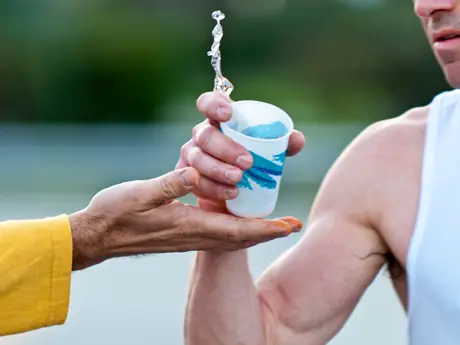
Your body is constantly working to control its temperature and remove excess heat during a workout or endurance event.
Your performance can be affected if your body has trouble maintaining its core temperature. In some instances, these changes can markedly slow the athlete and even become life-threatening at either end of the spectrum, such as hypothermia (low body core temperature) and/or hyperthermia (elevated body core temperature).
More: Swimmers: How to Avoid Hypothermia
While training can help improve fitness as well as tolerance to the heat and cold, it cannot help the body adapt to dehydration.
One of the advantages humans have is the ability to remove heat from the body through evaporation. Through this process endurance athletes are capable of extraordinarily long durations of exercise.
However, our ability to keep cool by sweating and evaporation comes with a requirement: we must replace fluids at regular intervals and with the appropriate amounts.
As an athlete exercises, sweat secretion is needed to help lessen increases in body temperature. Similarly, in cooler climates while sweat secretion is less there are still fluid requirements to maintain homeostasis (the body's equilibrium) and optimal performance.
More: Cracking the Code on Sweat Rates
At the same time, sweat rates vary individually as a result of fitness, duration, intensity and ambient conditions. So, it can be complex to determine how much to ingest, when to do so and the type of fluids chosen.
There are well-established ranges and for most athletes these work very well. It's important not to under or over ingest fluids above or below these ranges and to learn in training what is the right amount for the given conditions and your fitness.
The Limits of Gastric Emptying
Dehydration stresses the athlete by increasing body temperature and lowering the hearts stroke volume and lessening blood flow to working muscles.
Developing a consistent and individual plan for rehydration on a daily basis should be a key point for the athlete. Still, some dehydration with endurance sports cannot be avoided and replacing all fluid losses isn't possible either.
There is a limit to how much fluid can be emptied from the stomach and re-absorbed.
More: Electrolytes 101
- 1
- of
- 2
About the Author

www.evanscoaching.com | marc@evansoaching.com | YouTube | Facebook








Discuss This Article